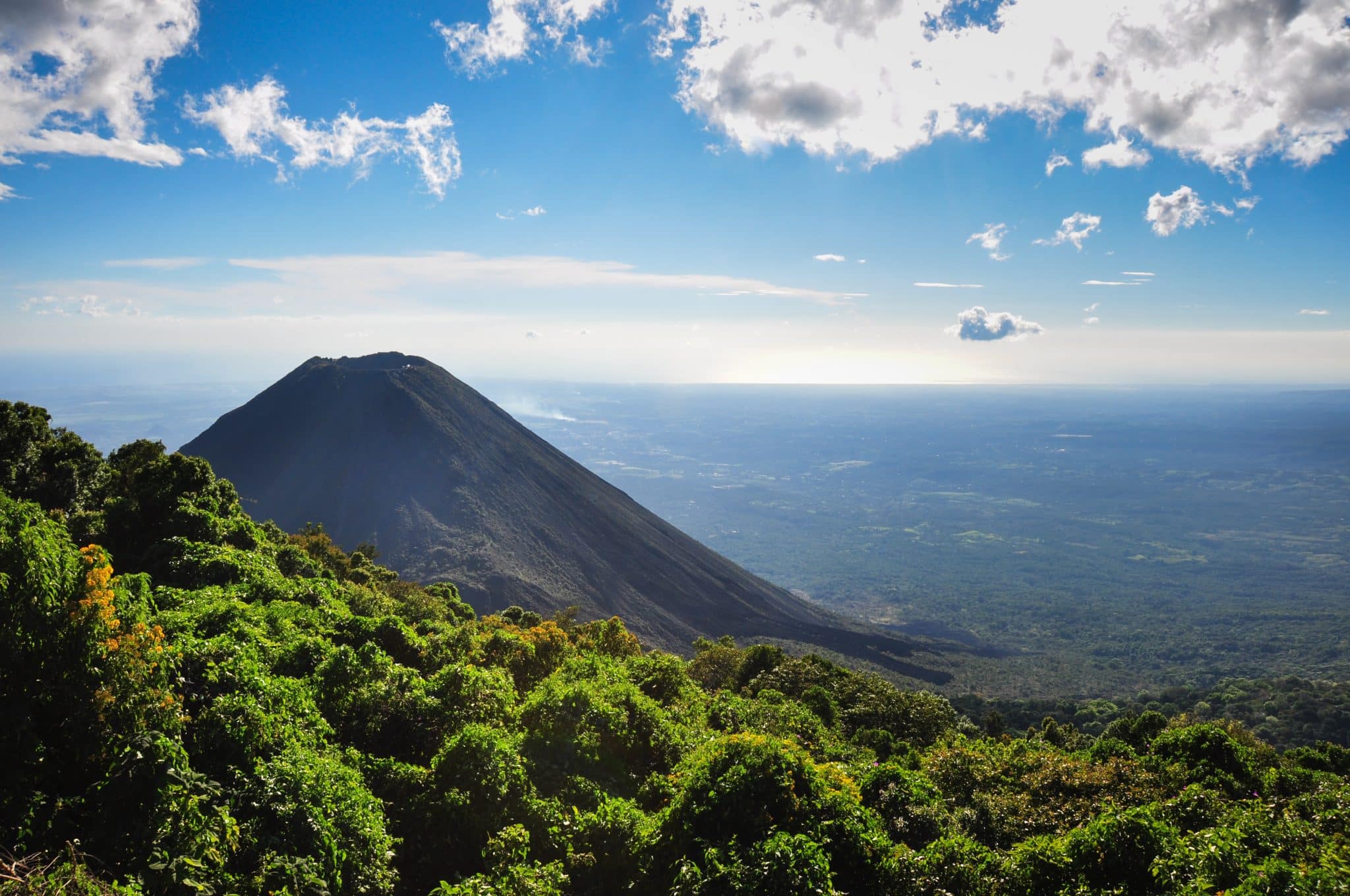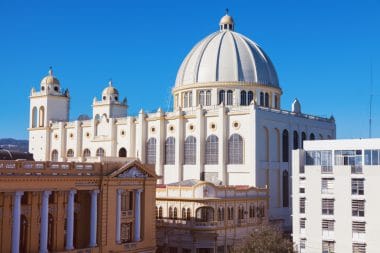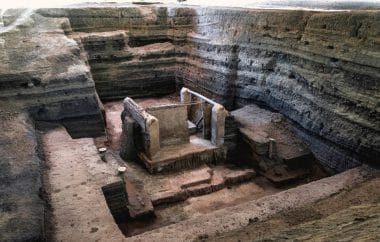
El Salvador is located on the Central American Pacific coast, framed by Guatemala and Honduras. The volcanic chain divides the country into three natural units: the Surfer El Dorado on the southern coastal strip, the central plateaus and the mountains in the north. El Salvador is about the size of Hesse.
The cultural mix of indigenous traditions and relics of the former Spanish colonial rule in the midst of breathtaking and exotic landscapes enchants individual travellers with a penchant for adventure, far away from mass tourism.
San Salvador – poor and yet so rich

San Salvador is the capital of the country. One and a half million inhabitants live today in the city, founded in 1528 by the Spaniard Gonzalo de Alvarado, which is rich in historical, architectural and cultural heritage. Numerous buildings in the Spanish colonial style bear witness to a bygone era.
The cable car avoids the arduous ascent of Monte San Jacinto, on the summit of which there is a popular amusement park . The Museo de Arte de El Salvador is small but nice. If you can spare an hour during a stay in San Salvador, original works by Rembrandt, Picasso, Miro and Chagal will be revealed. In permanent and temporary exhibitions, local artists also offer insights into the Salvadoran soul. Guided tours can be booked with an English translator. Particular attention is paid to explaining the historical significance of the artworks for El Salvador.
Pleasure cruise with dolphins and whales
Providers such as Bahia Ecoturismo organize pleasure trips with sailboats or catamarans from Todos Os Bay to Os Santos. While diving and snorkeling, you can marvel at the colorful Pacific underwater world. With a bit of luck, you can get close to whales and dolphins. For refreshment, grilled sardines and ice-cold caipirinha are served by the captain. The crowning glory to enjoy the breathtaking sunset on the horizon.
Volcanoes up close

The Santa Anna volcano, called Ilamatepec in the Mayan language, erupted for the last time in 2005. The eruption caused a cloud of smoke over ten kilometers high and claimed two lives. Especially from the air, the image of the three craters lying inside each other is impressive. Various viewpoints offer varied panoramas. A small museum provides information about volcanology and the history of Santa Anna. A guided day tour with a visit to the nearby Coratepece Lake costs about 65 euros per person.
The San Salvador Volcano is the main attraction of Parque Nacional El Boquerón. In its huge crater lies another, smaller one. This was created by an eruption in 1917 and is affectionately called “El Boqueroncito” (the little Boquerón) by Salvadorans. The colourful flowers of hibiscus and hydrangeas interrupt the endless, lush green.
Joya de Cerén – the lost Mayan village
Joya de Cerén is an archaeological site that includes a Mayan village. Joya de Cerén was probably inhabited until the eruption of the volcano Ilopango in 535 AD. Archaeological excavations brought to light the lost village, which had been buried under a meter-thick layer of ash for centuries. The UNESCO World Heritage Site gives a vivid idea of the everyday life of the Maya.
Culinary delights at the Feria Gastronomica in Juayúa
Juayúa in the southwest of El Salvador is known for its Feria Gastronomica around the local church and the city park. Visitors can feast their way through the tantalizing culinary offerings, ranging from main-stream dishes like pork ribs and surf’n turf to Salvadoran delicacies like guinea pig, snake, or frog. Vegetables, rice and sweet temptations complete the rich offer. Especially on the weekends, you can taste a piece of the culture and joie de vivre in Juayúa.
Magic Waterfalls
From the Feria Gastronomica, you can take the ubiquitous tuktuk to the nearby Chorros de la Calera waterfalls. In the middle of the tropical forest, the magical place invites you to take a refreshing swim. Another popular waterfall is Cascada Los Tercios. The excursion can be ideally combined with a visit to the nearby city of Suchitoto, which is known for the large number of well-preserved colonial-style buildings; for example, the bright white church of Santa Lucia.
Yoga and dance at the cultural center Arte Para La Paz
The Centro Arte Para La Paz is a cultural center run by the American Catholic nun Peggy O’Neill. Exhibitions focus on the current migration movement towards the USA or the cultivation of native plants. The center offers simple rooms for accommodation. Visitors can practice yoga or dance together in workshops. The offer is intended to help young Salvadorans find prospects and prevent them from gang crime by developing their interests and skills. A location that gives authentic and at the same time warm impressions of the inhabitants of El Salvador.

